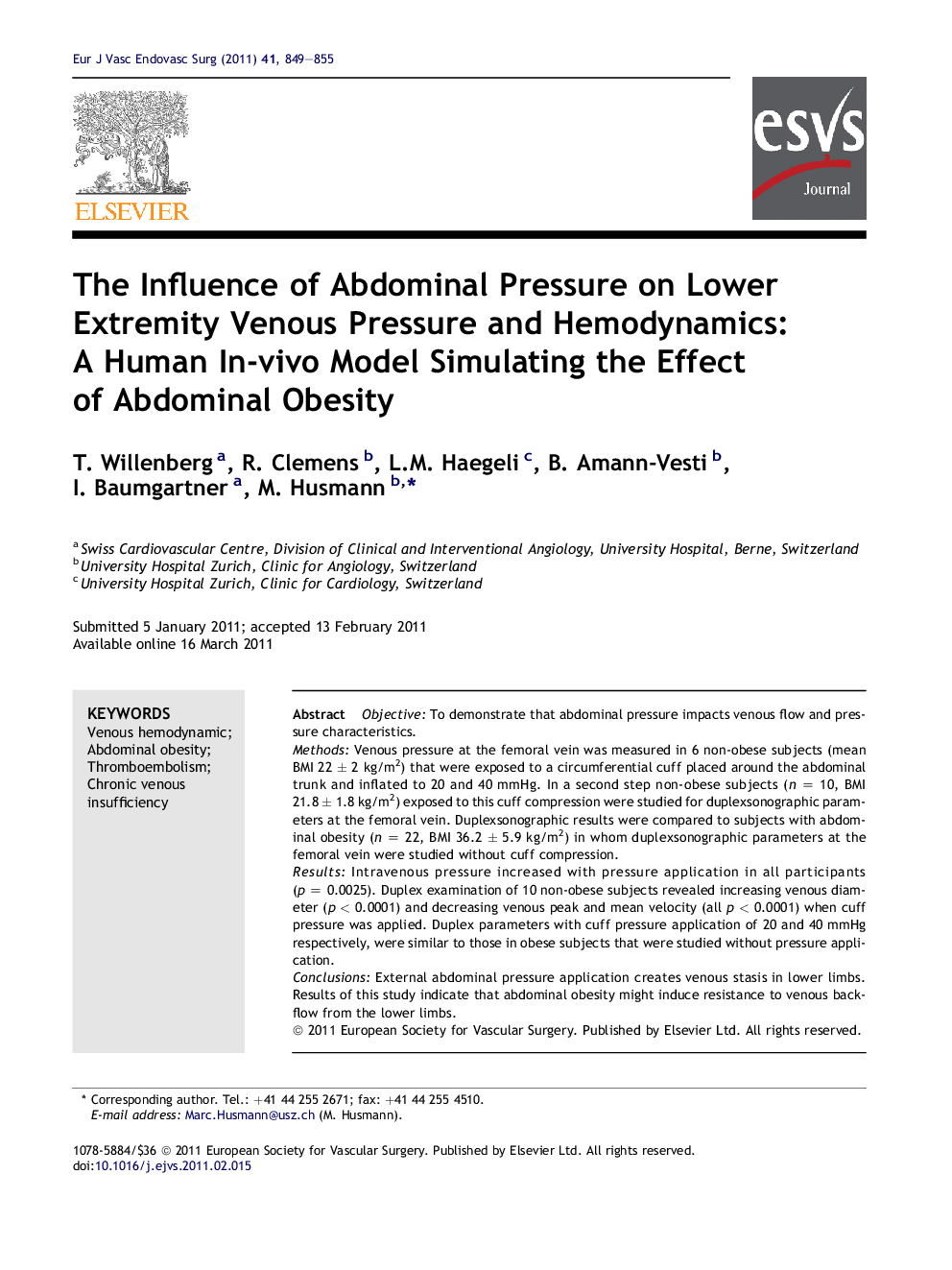| Article ID | Journal | Published Year | Pages | File Type |
|---|---|---|---|---|
| 2913333 | European Journal of Vascular and Endovascular Surgery | 2011 | 7 Pages |
ObjectiveTo demonstrate that abdominal pressure impacts venous flow and pressure characteristics.MethodsVenous pressure at the femoral vein was measured in 6 non-obese subjects (mean BMI 22 ± 2 kg/m2) that were exposed to a circumferential cuff placed around the abdominal trunk and inflated to 20 and 40 mmHg. In a second step non-obese subjects (n = 10, BMI 21.8 ± 1.8 kg/m2) exposed to this cuff compression were studied for duplexsonographic parameters at the femoral vein. Duplexsonographic results were compared to subjects with abdominal obesity (n = 22, BMI 36.2 ± 5.9 kg/m2) in whom duplexsonographic parameters at the femoral vein were studied without cuff compression.ResultsIntravenous pressure increased with pressure application in all participants (p = 0.0025). Duplex examination of 10 non-obese subjects revealed increasing venous diameter (p < 0.0001) and decreasing venous peak and mean velocity (all p < 0.0001) when cuff pressure was applied. Duplex parameters with cuff pressure application of 20 and 40 mmHg respectively, were similar to those in obese subjects that were studied without pressure application.ConclusionsExternal abdominal pressure application creates venous stasis in lower limbs. Results of this study indicate that abdominal obesity might induce resistance to venous backflow from the lower limbs.
